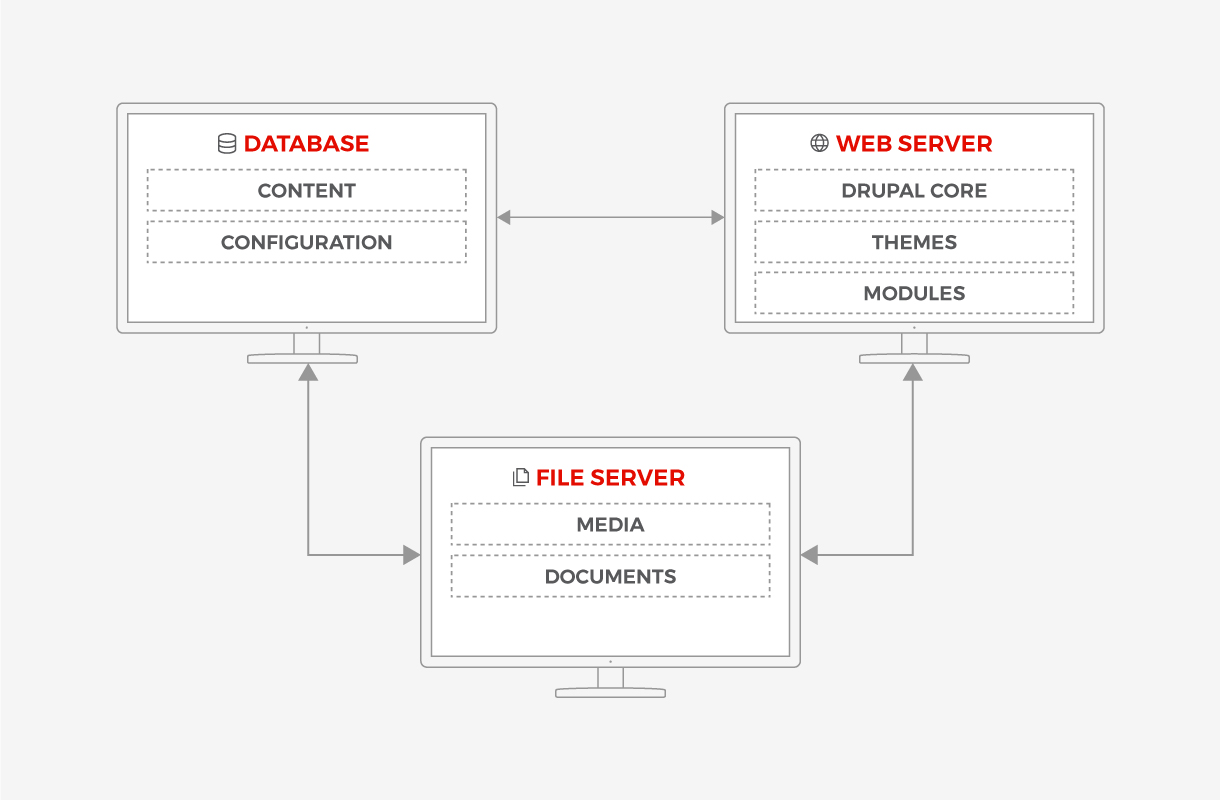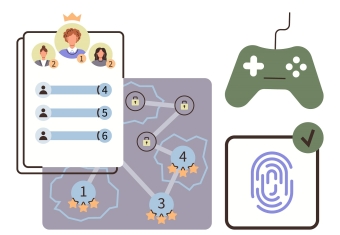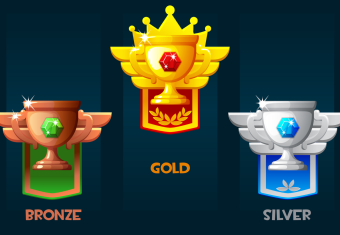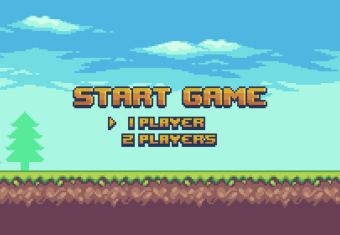GovCMS websites are made up of several technical components which users have certain access to in order to input and customise web content. Whether or not you are actively involved in building your website, it’s helpful to know what these components are as it makes it easier to
- put your content together, and
- work with the subject matter experts (SMEs) who may be assisting with your website build
This article will look at these components under a managed service (SaaS).
The Parts
The best way to think about each component would be as three “computers” working with each other to run your website and display your content.
- The Database
- The Web Server
- The File Server

Each “computer” houses important parts of your GovCMS website which may or may not be customisable.
1. The Database
The Database stores a website’s content such as metadata and textual content, and configuration e.g., website settings and structure. Users have control over the content side of things however in terms of the configuration, only the options permitted by GovCMS can be modified.
2. The Web Server
The Web Server contains the Drupal Core app which provides all the website's underlying functionality, themes which enable users to modify how their website looks and modules which extend the website’s functionality.
Drupal Core
GovCMS is built off Drupal Core – that is, the base Drupal software. This app is “locked” and cannot be modified by users. Instead, it is managed and maintained by the GovCMS team. Whenever there is an update by Drupal, the GovCMS team are responsible for integrating any of these updates as they see fit.
Themes
A theme is a set of files that define the visual look and feel of the website. The GovCMS software allows users to customise these files and change the visual display of their site. For example, the colour palette or logos. Like modules, the GovCMS software also comes with a set of themes which users can use and switch between. Unlike modules however, themes can be modified as the user sees fit. Additional themes can also be installed - provided that they meet the overall GovCMS security and compliance requirements.
Modules
Modules are codes which extend site features and functionality. For example, how user accounts are managed or what fields are included in a website. The GovCMS software comes with default extensions which users can turn off or on, depending on what type of functionality they require for their website.
Users do not, however, have the ability to add or install their own modules at their whim. Any additional modules that users wish to include on their GovCMs website needs to be risk-assessed and formally approved by the GovCMS team.
3. The File Server
The File Server is where content such as media and documents is stored. File system access is overall restricted, but users do have the ability to add and manage certain approved file types. For example, images or videos.
Managed vs Self-Managed GovCMS websites
The above sections detail what can/cannot be done with sites under a managed service (SaaS). There is a degree of customisation options available however this only applies to what is already included and readily accessible in GovCMS. There are restrictions to what additional features can be added or which parts of the website can be accessed. That said, with these limitations comes the comfort that the website and its elements are secure and compliant with GovCMS requirements.
Users with self-managed (PaaS) websites have more flexibility to modify elements such as modules or file system access. However, the other side to this greater customisability is that users are also responsible for the security and compliance of these elements. They need to independently ensure that any modifications they make abide by GovCMS website requirements.
How Interserv can assist
Whether a site is self-managed or not, Interserv can help GovCMS users with setting up the configuration, creating custom themes, and configuring modules according to their requirements. We can also assist with creating or inputting the content, files and images needed to put the website together. In short, we will work with you to help you build the website you need.


